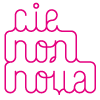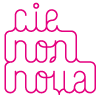Les Os Noirs
Les Os Noirs (Black Bones)
Dealing with desire is full of pitfalls, especially when desire involves death…
My relationship with dramatic art is an intense one ; this animated desire for perfection and the need for pertinence, taxes me mentally, and increasingly, with each project. I do not feel invested with mystical powers, but with the preoccupation of digging myself deep into the cracks and fissures of our worlds. For me, an atheist, death is a private affair concerning the completion of our lives. I do not understand the believers, yet sometimes I admit I am a little jealous of their absolute certainty that there is an afterlife, a paradise !
I have given myself another living life by changing my identity. It is not the paradise I imagined but instead a new land to appease. I have left the impossible acceptance of my male adolescence behind me in order to accept myself as a mature woman.
I once had the attributes of power and I clung to the cliff face to get the height that I needed to take the plunge. It was art that gave me the distance I needed. When I was 20, certain works of art brought me down to earth, and with my feet firmly on the ground I moved away from the cliff so that I could contemplate it. I began to see space, time and the horizon as constant features that needed to be redefined. I chose to hang those organs, those symbols of power, like one castrates an animal’s testicles with a length of horsehair. The act of suicide has always stubbornly accompanied me, like the poison hemlock in the resistance fighter’s pocket.
Suicide is near. From the moment we consider it to be a possible way out, it travels with us, in our footsteps.
But those of you reading this, those of us who are still here, we only « know » suicide through loss and the pain of absence. It is a forbidden act, it leaves us in the realm of the taboo…
There is no simple answer to understanding why people commit this rational act. The only certitude is that the act of suicide demands a long and intense period of reflection, and is rarely carried out on an impulse.
I imagine that once you have taken the decision, it is the organisation and preparation stage that needs developing : the how, where and when of the ceremony ; these things take precedence over all other considerations.
Whether the suicide is committed in the secrecy of a bedroom or right in front of a neighbour, it’s all about signification. Suicide does not need morality, the perpetrator is certain of his/her act. The preparation and the traces or enigmas that he or she leaves behind are their signature.
It is the preparation of the act which interests me and not the cause. Their is no execution without premeditation, especially when the execution in question is your own. Once the moment of decision is far behind you, the ceremony needs organising. You can die on your own, or sadly, as we see nowadays, you can die taking others with you, as a way of broadcasting your gesture to the world, or even worse, as a form of vengeance and conviction. From shipwreck to havoc, from the silent act of a close friend to that of a plane pilot who takes a hundred passengers down with him, or that of a kamikaze behind the wheel of a truck, the meaning of each act is incomparable.
How should I tackle this blazing subject !
From bright light to pitch black, I perceive the rupture through this prism. Entering into darkness, sheltering from the sun’s rays ou hiding from the daylight, these are presages of extracting oneself from the world of the living. I imagine this to be an extremely sensorial experience, a dark poem.
« Black Bones » is part of The Wind Cycle, a series of achrome tableaux . Black, grey, anthracite, these are the tones of this light-dark poem. An effort to shape a series of leaps towards death, without any pathos, in order to nourish our thoughts on the suject.
One performer for numerous personal stories. Oversized, moving, black matter.
One body and various elements for which I have a particular affection : plastic, fabric, paper, metal and a permanent wind source to remind us of life.
The form is archeological. A superposition of layers at the whim of the excavations ; we are the witnesses of a rebirth, a renaissance. She rips at the ground, searching for what came before her. She pinpoints what we have become as she exhumes traces and memories. Her body surrenders itself at each new disappearance. We follow her as she reintegrates a carnal law.
There she is, watching the waves approaching, rolling around her body, marooning her in limbo. No attempt to try and hang onto the edge, not even a cry of fear. She is not frightened, she has chosen this instant, she disappears like the foam on the waves… like Léopoldine Hugo.
There she is, prisoner of the earth’s crust, a speleologist without a lamp, forming chains of a mountain range, creating herself a new land, she is an Atlas.
There she is, gathering pieces of graphite, the radiation is invisible and yet she feels the blades, her body is a tumour in the making.
There she is, scattered in the middle of a cold land. She has barely left the trenches, she is searching for her burnt limbs, her breath is her only link to life.
They once were. Hes or shes. They have left traces which our brains cannot erase. They have killed themselves, through suicide, they have taken action, fully aware of the outcome…
They are ghosts from whom I unearth the beauty of their actions. I name them « the black bones ». They are the joy of reuniting with a series of stories which remain engraved in my mind.
And you ? Which ones remain in your mind ?
In the beginning…
As is so often the case, I feel the subject pervading me for a long while before I can formulate an intelligible word.
Last spring, I was working on the project « Icônes » with Anne-James Chaton (with whom I created the piece « Black Monodie » for the « Sujets à Vif » stage in Avignon Festival in 2010). We were working from his book « Elle regarde passer les gens » (« She watches people pass by »). In my gestures and movements and by manipulating the stage elements, I discovered a strong, broad form of narration. Using sections of black plastic and black fabric, I began to create a choreographic framework, sandwiched between the stage and these huge sections of material, as if an « underground » life were emerging.
I met Chloée Sanchez, a young artist who trained at the Charleville Mezières Centre National de la Marionnette (the National Puppeteering Centre), during a workshop at the Maison des Jonglages. In the summer of 2016, I invited Chloée to do some research work with me, exploring the use of these giant-sized panels and exchanging our thoughts and ideas. Together we questioned a number of subjects connected with identity, desire and madness. Our research led to the decision to create this new form in The Wind Cycle.
I am a great believer in encounters ; this is how I proceed in the choice of a performer. As with « Belle d’Hier » (« Yesterday’s Beauty »), or « L’après-midi d’un foehn » (« Afternoon of a Foehn »), it is the artists who approach me. It is the depth of their performance which draws me to them, and them to me. Giving yourself to the audience is not an act of glory but a question of truth and accuracy. It is also about understanding the collateral damage resulting from our performances, be it positive or negative. I refuse to take the easy path and I ask each performer to understand this when in the process of creating a new form. This dialogue between the author and the performer is an act of passion which is pushed to outrageous extents in order to discover the boundaries of each subject.
When working with a young woman on a subject as dark as this one, it is important to extract oneself from the question of the end of a life and instead bring in a mythical sense ; the image of a virginity we all wish was immortal. No parent wants to imagine the death of their children before their own death ; entire mythologies are built upon this existential relationship.
Chloée is an artist trained in puppeteering and object theatre, a ventriloquist and a musician, inspired and moved by questions of human nature and mental illness.
She is silent but she knows how to make herself heard.
The Creation Team
Original idea, dramaturgy, direction and scenography : Phia Ménard
Composition and dramaturgy assistant : Jean-Luc Beaujault
Performer : Chloée Sanchez
Soundtrack composition and sound engineer : Ivan Roussel
Lighting design and lighting engineer : Olivier Tessier
Costume design and fabrication : Fabrice Ilia Leroy
Set/system construction and stage manager : Pierre Blanchet and Mateo Provost
Set construction and props : Philippe Ragot with Manuel Menes and Nicolas Moreau
Technical trainees : Margot Lemaire and Tom Desnos
Photographs : Jean-Luc Beaujault
Co-director, administration and production : Claire Massonnet
Technical direction : Olivier Gicquiaud
Production assistant : Constance Winckler
Public relations : Justine Lasserrade
Part of The Wind Cycle
Length: 1 hour
Production : Compagnie Non Nova.
Résidence and coproduction : Espace Malraux, Scène Nationale de Chambéry et de la Savoie.
Coproduction : Théâtre Nouvelle Génération – Centre dramatique national de Lyon, Centre Chorégraphique National de Caen en Normandie – Direction Alban Richard, le Théâtre National de Bretagne et du Théâtre des Quatre Saisons, Scène conventionnée Musique(s) – Gradignan (33).
With supports Monfort Théâtre et du Théâtre de la Ville – Paris, du Grand T, Théâtre de Loire-Atlantique (44), du Quai – CDN Angers Pays de la Loire et du Théâtre de l’Hôtel de Ville – Saint Barthélémy d’Anjou (49), du Théâtre, scène nationale de Saint-Nazaire (44), du Grand R – scène nationale – La Roche-sur-Yon (85), du Cargo – Segré (49), du Théâtre – Scène conventionnée de Laval (53), de la scène conventionnée Espace Jéliote-Oloron (64), de la Scène Nationale de Sète et du Bassin de Thau (34), du Théâtre d’Orléans, Scène Nationale (45), du Théâtre Les Treize Arches, scène conventionnée de Brive-la-Gaillarde (19) et du Tandem Scène nationale de Douai (59).
The Compagnie Non Nova – Phia Ménard is subsidised by the French Ministry of Culture and Communication – DRAC des Pays de la Loire, Nantes City Council, the Conseil Régional des Pays de la Loire and the Conseil Départemental de Loire-Atlantique. The company also receives support from the Institut Français (France’s international cultural relations body) and the BNP Paribas Foundation.
The company is based in Nantes.
The Compagnie Non Nova – Phia Ménard is currently associate artist at Malraux scène nationale Chambery Savoie, and the « TNB, Centre Européen Théâtral et Chorégraphique de Rennes » (National Theatre of Brittany).



